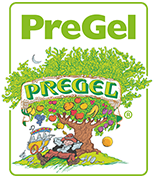A Look At The Latest Technology In Probiotics
When did the food and beverage industry become so enthralled and proactive about our digestive health? From Activia® yogurt to ingredient supplements, a staunch focus on probiotics and the health benefits they offer is all over supermarkets and countless television advertisements. All of this attention has raised the question for many food products – if they don’t contain these digestive and pro-health aides, should they? An educated answer requires an understanding of the probiotic, a look at what’s currently on the market and knowledge of how probiotics can be incorporated into products.
Starting with the basics, the World Health Organization (WHO) defines probiotics as live microorganisms, which, when administered in adequate amounts, confer a health benefit on the host. In layman’s terms, probiotics are primarily the “good” bacteria in the digestive tract that promote well-being, as the body requires a healthy balance of “good” bacteria versus “bad.” When “good” bacteria are thriving in the system, digestive health can improve as well as the overall immune system. Health benefits are however as unique as every individual’s body, and there are many ways probiotics can be effective, from improving difficulties with irritable bowel syndrome to fatigue. And there are many strains of probiotics, some that incorporate well into food products and others that don’t. Popular strains include Lactobacillus and Bifidobacterium.
In the world of food products, probiotics are most often found in dairy and specifically yogurt, as the microorganisms thrive in the fermentation process. However, the measurements of how many thousands of probiotics are in any given product is questionable. Probiotics are living organisms, therefore they die and thrive based on certain conditions. Liquid probiotics are another item on the market which can usually be found in the dairy section, and a spoonful can add the healthy bacteria to any food product. The third type is live supplements – these supplements carry live bacteria in a specially manufactured capsule that has an expiration date. Popular brands include Align® and TruBiotics™, both which have patented strains that are ingested by mouth.
These pills are generally found in the medicinal aisles of grocers. Both the liquid and pill versions, since they contain live bacteria, are also constrained by the environment and their life spans are limited as the bacteria will at some point decline. The fourth type is a powdered probiotic for use in prepared food products as well as manufacturing processes. Currently, GanedenBC30 is the only patented strain of powdered probiotic and it is making a buzz in the industry.
Unlike other probiotic strains, GanedenBC30 (Bacillus coagulans GBI-30, 6086) can survive the toughest manufacturing process, supply chain conditions, as well as stomach acids, making the probiotic both highly effective and efficient. The composition of GanedenBC30 differentiates itself from other probiotic ingredients due to its naturally occurring layer of organic material that protects the genetic core of the bacteria. Other probiotic strains are unable to form this protective layer, making them vulnerable to failure in a variety of production processes and therefore making the total number of bacteria in this product higher than many others in the market. The uniqueness of GanedenBC30 allows it to be incorporated into a variety of foods ranging from frozen yogurt and baked goods to confections,
which all require exposure to extreme temperatures.
With so many probiotic options, food manufacturers and retailers have many varieties to choose from. Each business has to pick the right way to incorporate these products into their products and also know its constraints such as whether a strain can handle the manufacturing process, if it is compatible with the food product being produced and if the integrity of the product remains. Some would consider the live versions more natural, and they are readily available by adding fresh yogurt to the mix or a spoonful of probiotic. But these versions do pose storage problems, as they must be kept at an optimal temperature and the shelf-life is short. Others would default to the powders for their shelf-stability and technology to preserve a higher amount of probiotic. Testing out these options is the best way to ensure that adding this to your product mix is effective and doesn’t compromise the product.
Probiotics are facilitating easy access to a trend that consumers are enthralled with, which is eating healthy to promote strong bodies. From gummi bears to fresh frozen yogurt, and even cereal, probiotics are on the market and here to stay. Food manufacturers and retailers have the ability and access to understand when and how to incorporate them into their products, and more and more research is being released every day. So, as you consider your next product launch or revamp an existing good, the question remains, will you join the bustling probiotic product community?
